 2
Issue 2
2
Issue 2
Rigorous and critical creative thinking: Central St Martins Product design degree show 2013
A review of Central St Martins Product design degree show reveals that students are equally interested in rigorous and critical creative thinking as in sound technical skills.
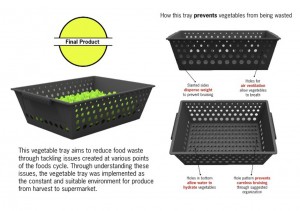
Vegetable tray. (Image (c) Clay Mohrman)
Examples of work addressing environmental issues, an ageing population or our ever more dependence on digital technology abounded throughout this year’s undergraduate Product design degree show at Central Saint Martins – the second so far in the extraordinary new building by Stanton Williams at its King’s Cross campus. The exhibition reinforced the course’s strong links with industry and emphasis on design that meets the wants and needs of real people and avoids neglecting our most pressing contemporary concerns.
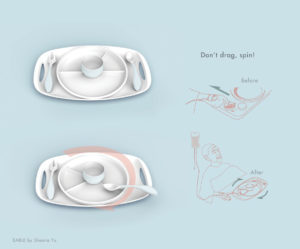
Eable. (Image (c) Sheana Yu)
Clay Mohrmon’s design for a vegetable tray, for example, hopes to be more ecological in its elimination of the use of excessive packaging. Concerned with the environmental impact of food waste generated by supermarkets, he offers an innovative solution that offers a constant and suitable environment for produce, from harvest to supermarket and to the final consumer. His clever design features, ranging from holes for air ventilation that allow vegetables to breathe, to their patterning, which prevents bruising, to its standard size for easy transportation, are the result of a deep understanding of how waste is created at various locations in the food cycle. Also, the new tray communicates to consumers the need to decrease the amount of waste produced in their own homes.
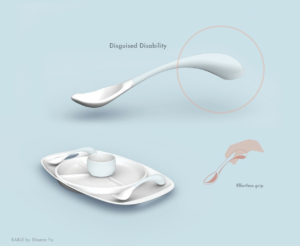
Eable, ergonomic detail. (Image (c) Sheana Yu)
Another example addressing social concerns is the work of Sheana Yu. Inspired by voluntary work as a mealtime assistant within hospital wards, Yu developed a set of unobtrusive assistive utensils that help elderly patients with limited physical ability to eat independently and effortlessly. Yu’s collection, entitled Eable, comprises of a rotational plate for easy access to food, and ergonomic cutlery for an easy grip. Yu’s collection is a good example of how functionality, combined with aesthetic appeal, can promote a more dignified experience for hospital patients.
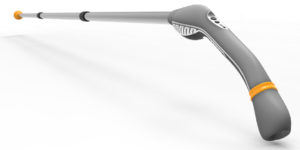
‘Navigation cane for the blind. (Image (c) Johannes Schullin)
In a similar vein, the work of Johannes Schullin investigates to what extent design can improve navigation for the formerly sighted through unfamiliar public spaces. The approach involved creating open source maps that can be easily translated into haptic feedback via a cane in order to restore users’ freedom of movement. A system of sensors strategically placed in the urban environment help create enhanced feedback for a safer, more independent journey.
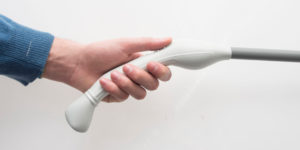
‘Navigation cane for the blind, ergonomic detail. (Image (c) Johannes Schullin)
The history of partnerships between the course and well-established companies, ranging this year from Italian kitchenware company Alessi, and furniture company Very Good and Proper (VG&P), to telecommunications company Nokia and British high street retailer John Lewis, ensures that the work produced by students is also commercially relevant.
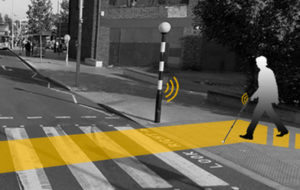
Navigation cane for the blind, how it works (Image (c) Johannes Schullin)
Working in partnership with VG&P, and with the contract sector in mind, Rosie Stonham designed a light, and comfortable sofa that is ready for serial production.
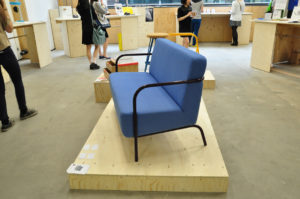
Lobby Sofa. (Image (c) Rosie Stonham)
All manufacturing processes are batch scale appropriate, meaning that there are no tooling costs, which in turn significantly decreases production costs. Echoing growing concerns for locally produced products, the sofa is produced entirely in the UK using a mixture of high tech and traditional manufacturing techniques. Based loosely on the iconic Routemaster bus seat, it is new and fresh, yet uncannily familiar. Moreover, its simplicity and choice of materials dovetails nicely with VG&P’s motto of ‘practical, beautiful and reasonably priced products that are made to last’. With the seat and the legs being produced separately, and hand assembled by the team at VG&P, there are also huge savings on shipping and manufacturing costs.
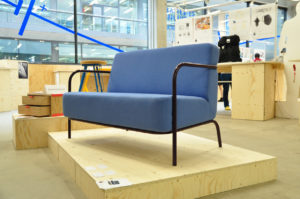
Lobby Sofa, close up. (Image (c) Rosie Stonham)
What is evident from Stonham’s work is that commercially viable does not always equate to corporate, soulless design solutions.
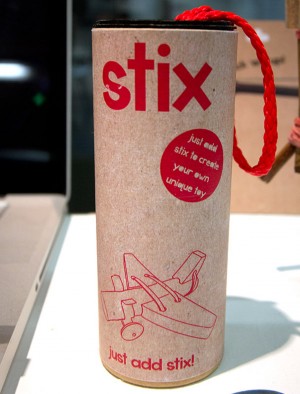
Stix. (Image (c) Colin O’Dowd)
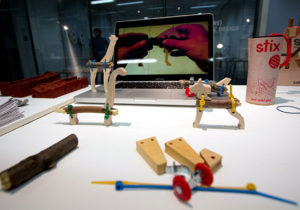
Stix, detail. (Image (c) Colin O’Dowd)
A good example is Not Another Chair’s (Colin O’Dowd) Stix project, a self-assembly educational toy that encourages parent and child to play together. Designed to help cement a father and child relationship, Stix consists of a selection of accessories that allow parents and children to create their own, unique toy but only after a stick has been found to complete the set. Consisting of rubber bands, cable ties and ready made-pieces that can turn any stick into objects, like cars or planes, or animals, the set comes in neat, practical and fun tubes. This easy to manufacture toy offers an antidote to the plethora of shiny, expensive, and meaningless toys that have became the norm in our ever switched-on society.
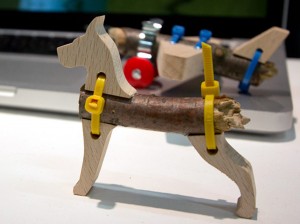
Stix, close up (Image (c) Colin O’Dowd)
Ultimately, the Product design degree show at Central Saint Martins stays well clear of championing the idea that good design is generated merely by sound technical design skills. Instead it showcases good design in which the technical solutions emanate from rigorous and critical creative thinking.
Nuno Coelho is a design theorist, lecturer and curator. After his post-graduation from the Royal College of Art in History of Design, Nuno has published several papers, curated exhibitions and lectured extensively on topics ranging from aesthetics to social and political design.